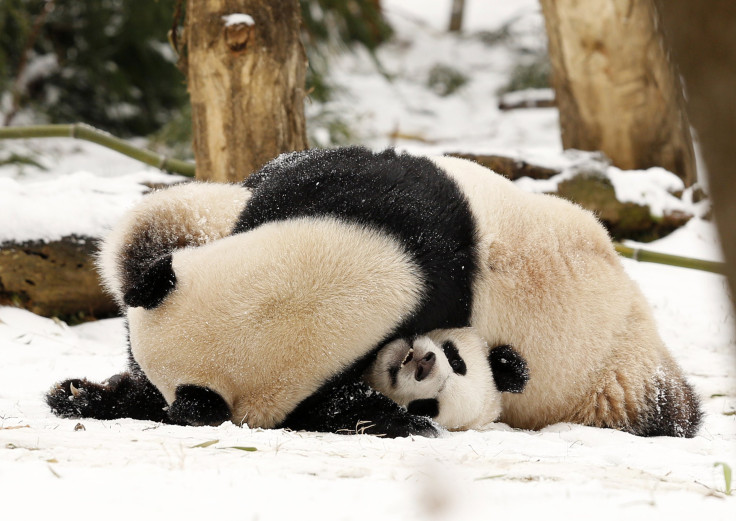Panda Mei Xiang Pregnant? National Zoo's Bear Could Be Expecting But It's 'Too Early To Tell'

It is "still too early to tell" if giant panda Mei Xiang is pregnant or not, according to a tweet from the National Zoo, which conducted an ultrasound Friday morning. It was the second ultrasound for the panda since she was artificially inseminated in the spring with semen from China. The first ultrasound took place early last month.
It's still too early to tell if Mei Xiang is pregnant or experiencing a pseudopregnancy, but we'll keep sharing updates #PandaStory
— National Zoo (@NationalZoo) July 10, 2015Mei Xiang is the mother of popular panda cub Bao Bao, who was born in 2013. There are roughly 1,800 pandas left in the wild, according the World Wildlife Fund for Nature (WWF). Giant panda births are incredibly rare, with female pandas ovulating only once a year, limiting the possible time to conceive a cub. Because of this, many pandas born in captivity come from artificial insemination in order to maximize the possibility of a birth.
If she is pregnant, this will be Mei Xiang's third cub after Bao Bao and Tai Shan, who was born in 2005.
It is particularly difficult to determine whether a giant panda is pregnant, due to what is called "delayed implantation," reported the Washington Post. A female panda can have a fertilized egg that floats in her uterus for weeks before attaching to its wall and developing into a fetus. And unlike many other animals, female pandas have the same hormones and behavior regardless of pregnancy, creating what is called a "pseudo pregnancy," and making it impossible to definitively determine if they are pregnant without an ultrasound, reports the Washington Post.
Zoo veterinarians tried to do an ultrasound in late May, but "she did not participate," said officials, according to the Washington Post.
watching LIVE on #Periscope: #PandaStory Mei Xiang Ultrasound https://t.co/Q5gtb8X5mS
— National Zoo (@NationalZoo) July 10, 2015In June, officials said the panda did well for the ultrasound, according to the Washington Post, having "fun scent-anointing herself with the ultrasound jelly after the vets finished."
The National Zoo has been following Mei Xiang's pregnancy on social media through #PandaStory, as a means to generate interest in the possibility of a new cub, which would be critical to raising the population levels of the endangered species.
© Copyright IBTimes 2025. All rights reserved.






















